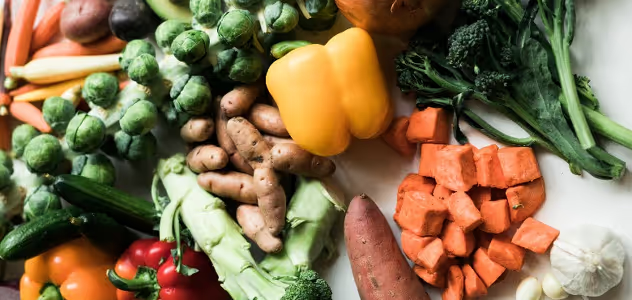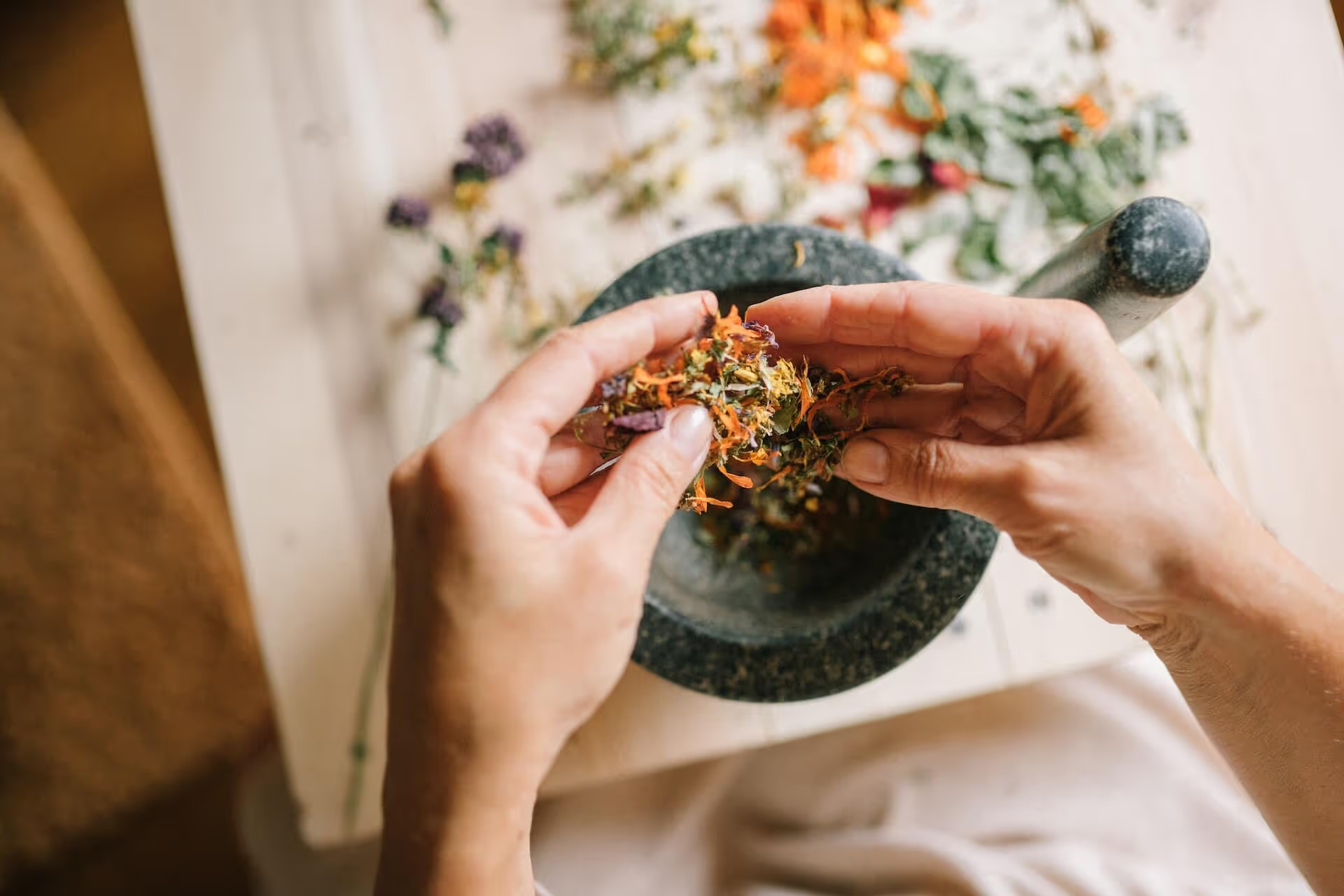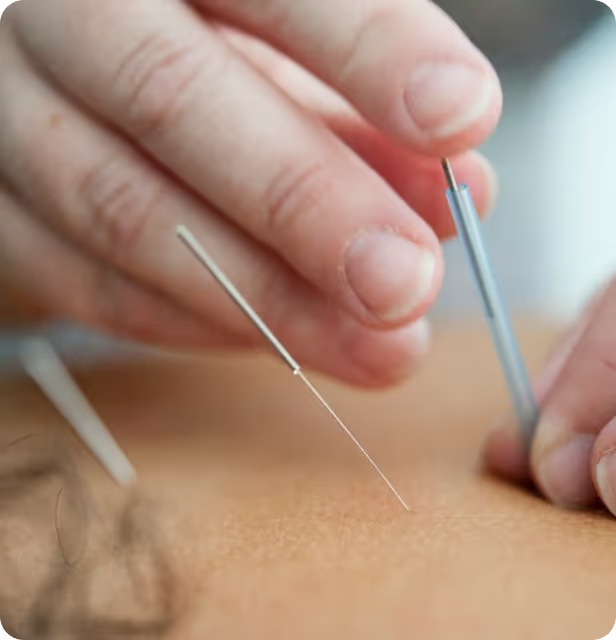If you live with chronic pain, you know that it often feels like a battle. It’s a daily struggle against your own body, marked by good days and bad days, flare-ups and remissions. You might have a name for your pain—fibromyalgia, arthritis, chronic migraines, back pain, but the label often does little to explain the unpredictable rhythm of your symptoms. Why does your pain feel worse on a cold, damp morning? Why does a stressful week at work lead to a debilitating weekend? It can feel like you’re navigating a storm without a compass.
What if there was a different way to look at your health? A perspective that sees your body not as a machine with broken parts, but as a garden that is deeply connected to the world around it. For thousands of years, Traditional Chinese Medicine (TCM) has taught that the key to lasting wellness lies in aligning our lives with the natural cycles of the seasons. This ancient wisdom, beautifully captured in the classic text the Huangdi Neijing (The Yellow Emperor's Inner Canon), offers a profound and empowering roadmap for pain management. It’s a philosophy centered on "treating what is not yet sick", a proactive approach to holistic health that can help you get ahead of your pain before it even starts.
What is Seasonal Living?
The core idea is simple yet profound: our bodies are a microcosm of the natural world. Just as the earth cycles through periods of birth, growth, harvest, and storage, so too does our internal energy. When we push against these natural rhythms, by working too hard in the dead of winter or failing to move our bodies in the spring, we create internal friction. This friction, over time, can lead to imbalance, exhaustion, and the flare-up of chronic pain.
By understanding the unique energy of each season and making small, intuitive adjustments to our lifestyle, we can conserve our resources, build resilience, and create an internal environment where pain is less likely to arise. This is the essence of seasonal living.
Spring: The Season of Renewal and Gentle Movement
"The three months of spring, they denote the time of unfolding and renewal. The energy of the heavens and the earth is born, and the ten thousand things flourish."
Spring is the season of new beginnings. Imagine the tightly coiled energy of a seed finally unfurling and pushing its way through the soil. This is the energy of spring: gentle, upward, and expansive. After the deep rest of winter, our bodies are meant to slowly awaken and stretch.
Ancient Wisdom for Modern Life:
The Neijing advises us to "go to bed with the setting sun and rise early" and to "walk freely in the courtyard, with loosened hair and a relaxed body."
- Modern Translation: This isn't about becoming a farmer overnight. It’s about gently reintroducing movement. Start your day with light stretching instead of an intense workout. Take a walk in the park during your lunch break. Wear looser, more comfortable clothing that doesn't restrict your body. The goal is to encourage your body's energy to flow freely, just like the new growth all around you.
Connection to Chronic Pain:
For those with chronic pain, spring can be a tricky season. You might feel a burst of energy and be tempted to jump into intense activities you missed during the winter. However, pushing too hard too soon can lead to injury or a flare-up. The stiffness and stagnation that built up over the cold months need to be released gently. Think of it as slowly unkinking a garden hose. If you force it, you can cause damage. Gentle, consistent movement is key to chronic pain relief in the spring.
Summer: The Season of Flourishing and Peak Energy
"The three months of summer, they denote the time of flourishing and growth. The energy of the heavens and the earth interact, and the ten thousand things blossom and bear fruit."
Summer is the season of peak abundance and outward energy. The days are long, the sun is strong, and nature is at its most vibrant. This is the time when our own energy is at its most expansive. It’s a season for social connection, joy, and activity.
Ancient Wisdom for Modern Life:
The text advises us to "go to bed with the setting sun and rise early, and have no aversion to the sun." It also says to "let the mind be free from anger" and "allow the energy to find an outlet."
- Modern Translation: Embrace the long days. This is the natural time for social gatherings, outdoor activities, and expressing your creativity. Allow yourself to sweat—it's your body's natural air conditioning system. From a dietary perspective, balance the heat of summer with cooling foods like watermelon, cucumber, mint, and fresh salads. Crucially, managing frustration is key, as anger can create internal "heat" that adds to the external heat of the season, leading to burnout.
Connection to Chronic Pain:
Summer is a time when many people with chronic pain feel their best. The warmth can soothe stiff joints, and the vibrant energy can lift the spirits. The goal in summer is to joyfully use your energy without depleting it. Overdoing it—too many late nights, too much rich food, or getting overheated and irritable—can lead to inflammation and exhaustion, setting the stage for a difficult autumn and a painful winter.
Autumn: The Season of Harvest and Gathering Inward
"The three months of autumn, they denote the time of harvesting and leveling. The weather becomes brisk, and the energy of the earth becomes clear."
Autumn is a season of transition. The vibrant, outward energy of summer begins to recede, and nature starts to gather its resources inward in preparation for winter. The leaves fall from the trees, and the air becomes crisp. Our bodies are meant to follow this same pattern of harvesting and consolidation.
Ancient Wisdom for Modern Life:
The Neijing advises us to "go to bed early and rise early, at the same time as the chickens." It also says to "keep the spirit peaceful and tranquil" and to "gather the spirit and energy."
- Modern Translation: As the days get shorter, start to wind down your evenings and establish a more regular sleep schedule. This is the time to finish projects you started in the spring and summer. Emotionally, it's a time for letting go of what no longer serves you, just as the trees let go of their leaves. Shift your diet from cooling summer foods to warming, nourishing meals like roasted root vegetables, squash, and hearty soups.
Connection to Chronic Pain:
For natural wellness and pain management, autumn is arguably the most important season for preparation. How you navigate autumn directly impacts how you will feel in winter. If you continue the frantic, outward pace of summer, you will enter the cold months with depleted reserves. This makes you far more vulnerable to pain flare-ups, low immunity, and seasonal depression. By consciously gathering your energy in the fall, you are building the resilience you need to navigate winter with greater ease.
Winter: The Season of Storage and Deep Rest
"The three months of winter, they denote the time of closing and storage. Water is frozen and the earth is cracked. Do not disturb the Yang energy."
Winter is the most inward and quiet of all the seasons. It is a time for deep rest, conservation, and storing energy. In nature, animals hibernate, and the world seems to fall still under a blanket of snow. Our bodies are meant to mirror this deep quietude. This is not a time for pushing, but for protecting our foundational energy.
The User Journey: David's Story
Meet David, a 45-year-old software developer with persistent neck and shoulder pain that often radiates into his upper back. He’s a disciplined person and believes in pushing through discomfort. For years, he forced himself to wake up at 5:30 a.m. for an intense run, even on the coldest, darkest winter mornings. He often felt drained rather than energized, and his pain was a constant, nagging presence.
After learning about seasonal living from a TCM practitioner, he decided to try a different approach. He took the ancient advice to "go to bed early and rise late, waiting for the sunlight." Instead of his pre-dawn runs, he allowed himself to sleep in a little later. He replaced his intense workout with 15 minutes of gentle indoor stretching and qigong. He saved his more vigorous runs for the brighter, longer days of spring and summer.
The change was remarkable. By working with his body's natural desire to conserve energy in the winter, he found his energy levels were more stable throughout the day. His sleep improved, and his chronic neck and shoulder pain became far more manageable. He wasn't being lazy; he was being wise.
Ancient Wisdom for Modern Life:
The text advises us to "avoid cold and seek warmth" and to "keep one's ambitions and desires as if hidden."
- Modern Translation: This is the time to give yourself permission to rest.
- Sleep More: Go to bed early and allow yourself to wake up a little later, ideally with the natural light.
- Move Gently: Swap high-intensity workouts for restorative practices like yoga, tai chi, or gentle stretching.
- Eat Warmly: This is the season for slow-cooked stews, bone broths, roasted meats, and warming spices.
- Stay Warm: Protect your body from the cold, especially your neck, lower back, and feet. A warm scarf is one of the best tools for holistic health in the winter.
- Look Inward: Use the quiet of winter for introspection, journaling, and planning for the year ahead, rather than launching major new projects.
Connection to Chronic Pain:
For anyone with chronic pain, especially pain that is worse with cold, winter is a time for deep nourishment and protection. Pushing yourself too hard now is like trying to run a marathon on a low battery—it will only drain you further and worsen your pain. By honoring winter's call to rest, you are recharging your deepest energy reserves, which is the ultimate foundation for long-term chronic pain relief.
The Path to Proactive Wellness
The Huangdi Neijing beautifully states: "The sage does not treat those who are already ill, but instructs those who are not yet ill." This is the heart of Traditional Chinese Medicine. It’s not about waiting for your body to break down and then trying to fix it. It’s about understanding the natural rhythms of life and making small, consistent choices that keep you in a state of balance.
Living in harmony with the seasons is one of the most powerful and accessible ways to practice this proactive form of self-care. It empowers you to become an active participant in your own healing journey, transforming the battle against your body into a dance of harmony with nature.
If you're curious to learn more about your own unique pattern and how you can tailor these principles to your specific needs, consider speaking with a licensed TCM practitioner.







